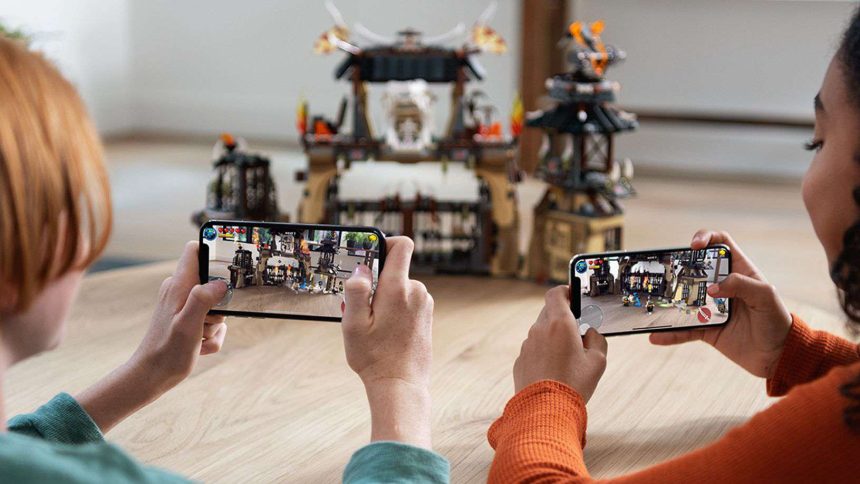Immersive technologies conquer new realms and embrace more prospects. Businesses continue to take advantage of virtual and augmented realities, which have a massive impact on how audiences perceive services as well as products offered in the IT industry or beyond. Many are still interested in how to develop a commercially successful AR application.
By the end of this article, you’ll get familiar with the fundamentals of augmented reality app development and ways of improving it for your business. Prepare for astonishing insights and valuable suggestions on how you can optimize business processes with a powerful augmented reality application onboard!
What Is Augmented Reality?
In simple terms, augmented reality is part of the XR technology that allows users to view digital images in the physical environment. Nowadays, AR-related solutions are most frequently used with smartphones or other portable devices, but the true power of augmented reality can be reached only with the help of wearables such as smart eyewear.
Even today, consumers already derive benefits from using AR apps in e-commerce or even offline shopping, which significantly revolutionizes the way people buy things not only on the internet but in physical stores. However, the functionality of augmented reality also extends to other sectors, including healthcare, gaming, manufacturing, training, education, and the like.
Using AR Apps for Business
There are multiple ways your business can utilize the potential of augmented reality. Companies develop AR apps to build product demos, enhance the brand promotion, and multiply customer engagement. Tech leaders like Google and Apple continually invest in their augmented reality departments as well as improving AR SDKs.
If you have a product and you want to promote it, the best way to do it is to ensure an immersive experience for your potential buyers. If your product or services revolves around interior design, retail, fashion, etc., you can rely on a single augmented reality app. It will do all the promotion for you showing shoes, rooms, or other items in the best light.
That’s how your potential customers can try on new shoes without leaving their homes or looking around at a new property they wish to purchase using their smartphones only. With apps like Google Lens, your customers’ user experience will be brought to the next stage, one level higher than other apps providing people with product information or helping them translate anything they see in the physical world.
How to Create an AR App?
Although the best way to develop an augmented reality app that will bring profit is to address a professional augmented reality development company, we’ll provide information on the general pipeline.
- Discovery phase. Try brainstorming practical ideas, conduct a competitor analysis, and elaborate on a coherent development plan that will specify all the workflows. Get a consultation from business analysts and find out your value proposition based on global demand.
- Cherry-pick your tech stack. The best way to create an augmented reality application is to make use of AR SDKs like ARCore, ARKit, Vuforia Engine, and others, so make sure your development team is using one of those. Another aspect to pay careful attention to is defining the level of expertise your developers have. Inquire them about the knowledge of C#/C++ or Java, inasmuch as most of the mentioned SDKs use these programming languages.
- Prepare the assets. Beyond question, your AR app should be equipped with a collection of 3D models, so hire a team of experienced 3D artists who will model everything from scratch based on references or edit the already-existing models in software like Blender, Autodesk Maya, ZBrush, etc.
- Create a 2D tracker. This thing will allow your app to scan a physical surface and place a two-dimensional image on it. That’s just how it all functions under the hood.
- Design an intuitive user interface. The UI design depends on the nature of the experience you want your users to have, so cooperate with real experts who know the score.
- Pull everything together and release. Use specific platforms like game engines (Unity, Unreal Engine) to integrate all the assets, scripts, UI elements, and the rest to construct your app as if it were a lego builder. When all is done and tested, you can go public, releasing your AR application for any system that supports it.
Client-Orientation Augmented Reality
Once your app is released, don’t forget to continually gather essential user information to improve customers’ experience. Also, it’s significant that you focus on marketing and brand awareness, so increase your media presence. Augmented reality itself isn’t the answer to all problems. Moreover, try partnering up with AR app development companies because they usually know better what to do, and their in-house resources are adjusted for similar projects.














